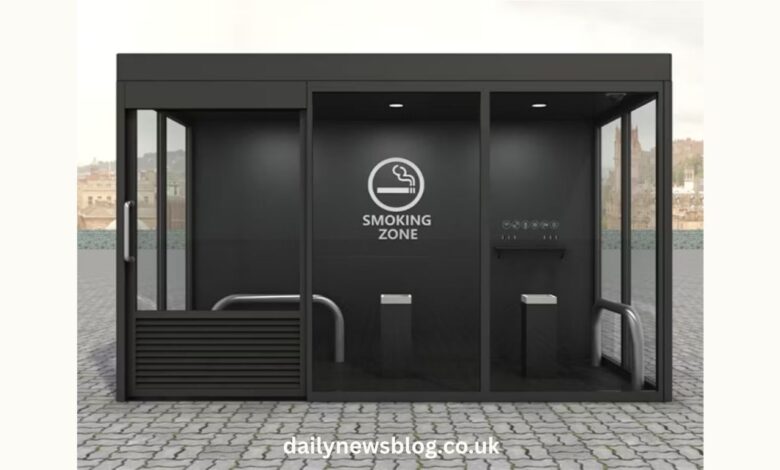You Won’t Believe What Shelter Smoking Is Doing to Lives

Introduction
Shelter smoking is a growing concern in housing facilities meant to serve the vulnerable. For many people living in shelters—whether due to homelessness, domestic abuse, or financial instability—smoking has become a common, yet often overlooked, issue. The presence of smoking in these environments not only impacts the individuals who smoke but also those around them, particularly children, the elderly, and people with health conditions.
This article reveals the hidden damage of shelter smoking, how it affects lives daily, and what communities and institutions can do to mitigate the risks. It’s time we look closely at what’s happening in shelters and how this quiet crisis can be turned around with compassion and action.
What Is Shelter Smoking?
Shelter smoking refers to smoking tobacco products (or even using vapes or e-cigarettes) inside or around shelter facilities. These shelters often include homeless shelters, temporary housing, domestic violence centers, and other crisis accommodations. Unlike public spaces, shelters often lack clear and enforced policies on smoking, making it difficult to protect everyone inside.
What makes shelter smoking especially troubling is its involuntary nature. While smoking in public may offer space and ventilation, smoking inside a shelter often means non-smokers, including children, are exposed to dangerous secondhand smoke. Additionally, the use of cigarettes indoors poses fire hazards in confined and often overcrowded environments.
Why Shelter Smoking Happens
Coping Mechanism in Crisis
For many residents, smoking becomes a survival tool. People living in shelters face overwhelming stress due to trauma, job loss, or domestic instability. For them, cigarettes offer a brief sense of relief and control. Unfortunately, this relief comes at a high cost to their health and that of others nearby.
The emotional toll of shelter life—crowded rooms, uncertain futures, isolation—can lead to increased smoking behavior. For those with mental health conditions or histories of substance abuse, the addictive nature of nicotine becomes even more pronounced.
Lack of Access to Support Services
Unlike hospitals or rehab centers, many shelters don’t offer smoking cessation services. Even when residents want to quit, they often lack access to nicotine patches, therapy, or even basic educational resources about the dangers of smoking. Shelter staff may not be trained in addiction support, leaving residents to cope alone.
Without proper support, even well-meaning rules fail. Some residents may start hiding their smoking, making it even harder to address the issue safely and openly.
Inconsistent Enforcement of Smoking Policies
Policies vary from shelter to shelter. Some enforce a strict no-smoking rule, while others allow smoking in designated areas. In reality, staff often find it difficult to enforce these rules, especially when dealing with residents in crisis. As a result, smoking often continues in secret, with enforcement becoming inconsistent and ineffective.
This inconsistency leads to confusion, resentment, and tension among residents. Those who follow the rules may feel punished, while others disregard them without consequences.
Health Risks of Shelter Smoking
Shelter smoking poses serious health threats not only to smokers but to everyone in the shelter. The toxic chemicals in secondhand smoke—such as carbon monoxide, ammonia, and benzene—can linger in the air for hours in poorly ventilated spaces.
Secondhand Smoke Exposure
Secondhand smoke is especially dangerous for pregnant women, infants, and people with asthma or heart conditions. In a shelter, where space is limited and privacy is scarce, escaping the effects of another person’s smoking is nearly impossible.
Increased Fire Risk
Improperly discarded cigarette butts have caused devastating fires in shelter facilities. With flammable bedding and crowded rooms, a single spark can turn deadly in minutes. Smoking indoors in secret only heightens the risk, especially at night when others are sleeping.
Mental and Emotional Health Impact
The smell of smoke, the stress of exposure, and the lack of control over one’s environment can create ongoing psychological stress. This tension can increase conflicts among residents, reduce sleep quality, and contribute to an overall decline in well-being.
Legal and Policy Challenges
Uneven Regulations
In the U.S. and the U.K., shelter smoking regulations vary widely. Some cities require shelters to be 100% smoke-free indoors, while others allow smoking in outdoor areas. However, enforcement remains inconsistent, and many shelters simply do not have the resources to monitor compliance.
Rights vs. Responsibilities
Balancing the right to smoke with the right to breathe clean air is a delicate issue. Many shelters fear that enforcing smoking bans will discourage people from seeking help. Others argue that health and safety should take precedence over personal habits, especially in shared environments.
Funding and Infrastructure Limitations
Many shelters operate on tight budgets and cannot afford to create separate smoking areas, improve ventilation systems, or provide cessation support. This economic constraint forces them to make difficult choices about which services to prioritize.
Shelter Smoking vs. Vaping: A New Dilemma
Is Vaping a Safer Alternative?
Vaping is often seen as a less harmful alternative to smoking, but it’s not risk-free. Many vape products still contain nicotine and harmful chemicals that can affect indoor air quality. Some shelters treat vaping as equivalent to smoking, while others don’t address it at all in their policies.
Lack of Regulation and Confusion
Without clear guidance on vaping, staff and residents are often unsure whether it’s permitted. This grey area contributes to ongoing issues with air pollution, irritation among non-users, and difficulty enforcing rules.
Real Stories from Shelter Staff and Residents
Shelter staff often describe shelter smoking as one of the most persistent challenges they face. One manager in Chicago shared:
“We put up signs, we hand out fliers, but people still smoke inside when they’re stressed or scared. We’ve had multiple fire alarms go off because of this.”
Residents also speak of their struggles. A woman in a transitional shelter said:
“I don’t smoke, but my roommate does. I’ve asked to be moved three times. My kid’s asthma is getting worse. I feel like I’m being punished for being poor.”
These powerful stories illustrate the emotional and physical toll of shelter smoking and the deep need for better policies and support systems.
Strategies to Address Shelter Smoking
Smoking Cessation Support
Providing residents with access to free or low-cost nicotine replacement therapies, support groups, and counseling can drastically reduce smoking rates. Programs should be trauma-informed and culturally sensitive to ensure participation.
Establish Designated Smoking Zones
Rather than a total ban that’s hard to enforce, shelters can create outdoor smoking shelters—well-ventilated areas safely distanced from entrances and windows. This approach respects individuals’ choices while protecting others.
Train and Empower Shelter Staff
Shelter staff should receive training in de-escalation and addiction support. They need tools to respond with empathy while enforcing rules that protect the community.
Success Stories and Case Studies
- Boston: A women’s shelter saw a 35% drop in smoking after installing a designated smoking area and offering nicotine gum.
- Toronto: A shelter partnered with public health officials to implement “Smoke-Free Nights,” offering rewards and group support.
- Manchester (UK): Staff collaborated with residents to co-create a smoke policy that allowed choice but set clear limits. This improved compliance and reduced complaints.
These shelters prove that with the right mix of compassion, resources, and clear communication, shelter smoking can be tackled effectively.
FAQs About Shelter Smoking
Q: How to make a smoking shelter?
A smoking shelter must be built with weather-resistant materials, have an open-air design (typically at least 50% open), include proper signage, and meet local regulations. It should be positioned away from entrances, windows, and high-traffic areas for safety.
Q: What are smoking areas called?
These spaces are commonly called smoking shelters, designated smoking areas, or smoking zones. They are intended to confine smoking to one controlled location to reduce exposure and maintain safety.
Q: What is the homeless smoking rate?
Studies show that over 70% of people experiencing homelessness smoke, nearly three times the national average. High stress levels, limited access to care, and mental health struggles all contribute to this high rate.
Q: What are the rules for smoking shelters in the UK?
UK law states that a smoking shelter must not be more than 50% enclosed. Indoor smoking in public shelters is prohibited. Adequate signage and maintenance are also required to comply with the Health Act 2006.
Q: How do you make a fire for smoking?
If referring to food smoking, build a fire using hardwood chips like hickory or oak. Keep the temperature between 225°F and 250°F and use indirect heat. However, this process is unrelated to shelter smoking, which focuses on smoking tobacco in residential facilities.
Conclusion
Shelter smoking is a public health and humanitarian concern that requires immediate attention. It impacts vulnerable people who already face immense hardship, exposing them to health dangers, legal risks, and emotional stress. However, the problem is not without solutions.
By offering support systems, creating designated spaces, and training staff effectively, shelters can take meaningful steps toward reducing smoking-related harm. It’s not just about stopping cigarettes—it’s about creating an environment of respect, health, and hope.
You won’t believe what shelter smoking is doing to lives, but once you see the truth, you’ll know it’s time to act.
Also Read: Dailynewsblog




